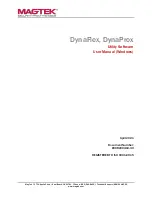
6-2
The
Command
(s) section of the message always starts with the second byte
and can consist of one or more commands - including data to be displayed
or voice messages to be broadcast.
The last byte is always ASCII 4 (
EOT
) to terminate the message.
Here is a listing of valid commands and examples:
Command
characters
Command function
*@
Reinitializes all terminals
3@
Reinitializes Terminal #3
1@Bn
Make Terminal #1 beep n (1-9) times
2@C0 *
Clears the entire screen (4 lines or 6 lines) on Terminal #2. *See
more about 4 and 6 line displays on page 6-4.
0@C1
Clears line 1 on Terminal #0
1@C2
Clears line 2 on Terminal #1
2@C3
Clears line 3 on Terminal #2
0@C4
Clears line 4 on Terminal #0
3@C5 *
Clears line 5 on Terminal#3 (if 6 line display), Clears all lines if 4
line display. *See more about the two display types on page 6-4.
1@C6 *
Clears line 6 on a 6 line display. Will do nothing on a 4 line
display. *See more about 4 and 6 line displays on page 6-4.
1@Dn
Displays date and time on line n (1-4) in US (mm/dd/yy,
hh:mm:ss) or Euro (dd/mm/yy, hh:mm:ss) format on Terminal #1
1@Vnn
Play voice message #nn (01-99) on Terminal #1
1@S
dataxxxx
Output
dataxxxxxxx
to serial port on Terminal #1 -max 2
31
chs
A typical “prompt” command sequence follows the format below:
0@n,m,o,data
where
n
is the line number (1-4) you want the prompt displayed on
m
is the character position (1-20) where you want the
prompt displayed
o
is the character that determines whether the prompt is for
display only (0) or is waiting for data input (1) See the
table below for valid characters for this position.
data
is the data you want displayed
For example, the command
@1,1,1, Enter Quantity
would display
Enter
Quantity
starting at position 1 on line 1, then wait for the operator to enter
their data.
















































